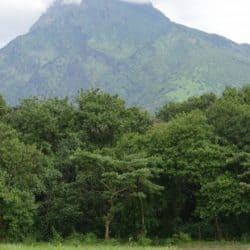The Impact of Climate Change on Mountain Gorillas
News | 12/05/09
Nowadays, there is a growing consensus in the scientific community that climate change is occurring and is one of many possible causes of biodiversity loss.
Changes in climate can impact biodiversity either directly or indirectly through many different mechanisms. Having a clear understanding of the exact impact of these mechanisms is crucial from the perspective of evaluating potential management actions. IGCP is on the frontlines of this rapidly growing science, and we have already initiated a program to document these potential changes in the Virunga-Bwindi landscape, the sole home of the mountain gorilla.
IGCP is launching a long-term monitoring program to collect relevant data on climate change impacts on ecosystems in order understand the causes and consequences of related ecological changes and ways to cope with them. We have already organized a stakeholder workshop on methods to use for assessing the impact of climate change on mountain gorilla food availability, as well as holding a field training for Virunga National Park rangers on rapid assessment of plants, training 38 rangers. Their dedication to this important methodology was impressive, as many often worked late into the night!
Climate variability within mountain gorilla habitat will be assessed through micro meteorological stations established in mountain gorilla range. It is assumed that due to the forest, we are getting more rainfall within the park, with a resultant cooler temperature than in areas outside the forest.
During 12 days of field work, rangers set up and monitored plots of trees in the Mikeno sector of the Park, which the gorillas call home. The global objective of this field exercise was to collect baseline data on the current diversity and distribution of different plant species and monitor changes due to climate change over time.
We anticipate this field training will give park rangers the opportunity to familiarize themselves with conducting rapid assessments of plant species in their national park using simple methods. For the long run, rangers will be able to assess the current diversity and distribution of the gorillas’ preferred foods, which will help us build a picture of climate change and the mountain gorilla, leading to new and innovative solutions for mountain gorilla conservation and mitigating climate change in this richly diverse forest habitat. Indeed, we will take this project a step further by also monitoring atmospheric CO2 concentrations, as well as developing a means of determining the potential impact of biomass (tree and plant) burning and volcanic discharge on atmospheric chemistry, assessing whether volcanic activity may influence air CO2 over time.
IGCP will continue to combine the latest science and technology with our long-term on-the-ground community programs to meet the difficult intertwined challenges of gorilla conservation and climate change now and for the future. I hope to regularly update you on our progress with this important new initiative.





